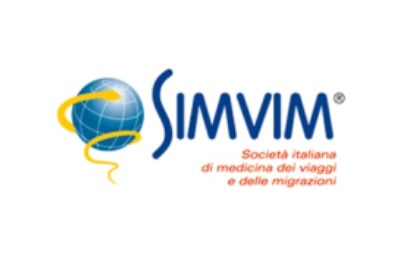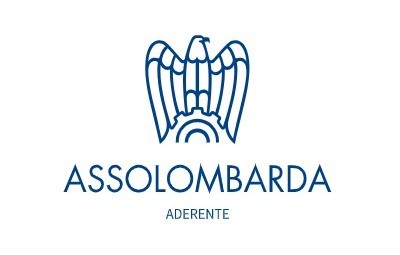Monkeypox
Monkeypox is a viral zoonosis caused by the Monkeypox virus (MPXV).
On July 23, 2022, the World Health Organization (WHO) declared Monkeypox a "Public Health Emergency of International Concern" (PHEIC) due to an increase in cases occurring both in countries where it was endemic and in new outbreaks in geographically non-endemic areas.
The first case in Italy occurred on May 20, 2022, and the Ministry of Health subsequently activated a surveillance system in collaboration with the regions and autonomous provinces. While transmission primarily occurs from animals to humans (typically primates and small rodents), cases of human-to-human transmission have been recorded, mainly through sexual contact but not exclusively, with a higher incidence in males between the ages of 18 and 50.
CAUSES
MPXV is a double-stranded DNA virus belonging to the Poxviridae family, Orthopoxvirus genus (the same genus as the Variola virus that causes smallpox). There are two genetically distinct clades of MPXV: Clade I (formerly the Central African clade, Congo basin) and Clade II (formerly the West African clade).
Clade I has a mortality rate of approximately 11% in unvaccinated individuals in Africa, while Clade II causes a less severe illness with a mortality rate of less than 4%.
TRANSMISSION
In endemic countries, it is primarily a zoonosis transmitted through direct contact with infected animals, occurring during activities such as hunting, capturing, and processing of animal skins. Natural reservoirs are not known in non-endemic areas. It is advisable to thoroughly cook all meat-containing foods before consumption.
Human-to-human transmission mostly occurs through close and prolonged contact, which can happen through aerosol transmission, sexual contact, or general mucous membrane contact. Less commonly, it can be contracted through contact with contaminated objects, such as sheets, towels, clothing, electronic devices, and surfaces touched by an infected person. Other less common transmission routes include transmission through the placenta from mother to fetus.
GEOGRAPHICAL DISTRIBUTION
Monkeypox is endemic in Central and West Africa, particularly in Nigeria, the Democratic Republic of the Congo, and the Central African Republic.
Starting from December 2022, numerous reports have been received from non-endemic countries in Europe, the Americas, the Western Pacific, and countries in the Eastern Mediterranean.
SYMPTOMS
It is typically a self-limiting disease with an incubation period ranging from 5 to 21 days, followed by a symptomatic/paucisymptomatic phase lasting a total of 4 weeks. Clinical manifestations vary widely: some individuals may have an asymptomatic form of monkeypox, while others may have more severe clinical conditions requiring immediate hospitalization (primarily in conditions of immunosuppression, pregnancy, etc.).
Different phases of clinical manifestations can be distinguished:
- The prodromal phase with fever, headache, lymphadenopathy (a differential diagnostic element).
- The eruptive phase, characterized by skin eruptions that develop within three days of the prodromal phase, initially appearing on the face and then spreading to other areas, with a particular involvement of the limbs, including hands and feet. If ocular involvement is present, it can manifest as corneal ulcers, leading to blindness. A differential diagnostic element compared to common chickenpox is the presence of lesions in the same maturation state for the anatomical site and of homogeneous size.
- Skin evolution: skin eruptions tend to evolve into macules, papules, or vesicles before forming crusts. These crusts dry up and fall off. An infected individual remains contagious throughout the duration of the illness, from the onset of symptoms to the formation of skin lesions (approximately 2-4 weeks). Atypical manifestations include the prodromal appearance of genital, anogenital, or oropharyngeal lesions, with or without fever. Complications include secondary bacterial infections, bronchopneumonia, sepsis, encephalitis, and corneal infection leading to loss of vision. In the 2022 global epidemic, genital, perianal, and oral complications were described, including proctitis and tonsillitis.
DIAGNOSIS
Initially, diagnosis is differential based on the disease with similar symptomatic manifestations. PCR/Real-time PCR testing should be conducted following clinical and epidemiological evaluation to confirm a suspected diagnosis due to its higher sensitivity and specificity.
Serological testing, on the other hand, can support diagnosis but is not sufficient to diagnose infection and still requires evaluation through molecular testing of samples taken from skin lesions (skin fragments, swabs of exudate).
TREATMENT
In general, no treatment is necessary for individuals with few or no symptoms. For individuals with worsening clinical conditions, antiviral treatment is administered, which typically interferes with a surface protein of Orthopoxvirus, thus inhibiting replication and slowing down the spread of the virus.
Starting from January 2022, Tecomirivat has been authorized by the European Commission for the treatment of Orthopoxvirus infections (smallpox, monkeypox, cowpox) in adults and children weighing at least 13 kg.
Other antiviral drugs are under study, including cidofovir and brincidofovir. However, there is no available data on the effectiveness of cidofovir in treating human cases of monkeypox.
PREVENTION
Preventing the spread of the virus is effectively contained through prompt contact tracing. This allows for preventive measures such as isolating potentially contagious patients pending diagnostic evaluations to confirm or rule out the diagnosis.
It is also crucial to sterilize clothing, garments, sheets, and utensils contaminated by positive individuals.
Furthermore, it is essential to avoid contact with immunocompromised individuals and maintain thorough hand hygiene.
The Imvanex vaccine, a live attenuated virus used in Europe since 2013 for smallpox prevention, is also available for monkeypox prevention as of August 2022.
Several studies have shown that individuals previously immunized against smallpox (before 1981) can achieve greater than 85% protection against monkeypox, resulting in less severe symptomatic manifestations.
In Italy, the current availability of the vaccine is limited and is therefore reserved for specific high-risk categories, such as laboratory personnel and men who have homosexual relations and fall into specific risk categories (Italian Ministry of Health circular dated August 5, 2022).
Sources:
Organizzazione Mondiale della Sanità (WHO)
CDC Centers for Disease Center





